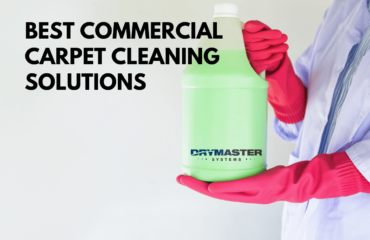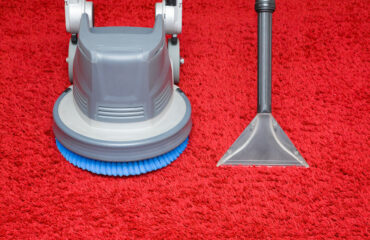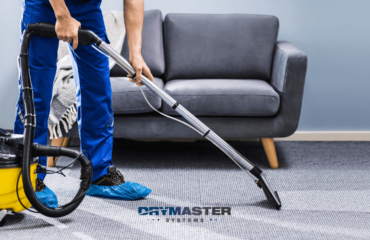Professional carpet extractors are one of the biggest investments for any carpet cleaning business. But like any high-performance tool, they only deliver high-quality results when properly maintained. A well-cared-for extractor can last years, provide consistent suction and heat, and minimize costly service calls.
If you skip basic upkeep, though, your most important tool could fail mid-job, leaving you (and your customer) frustrated.
Whether you’re a new business owner or a technician tasked with equipment upkeep, understanding how to maintain your carpet cleaning extractor is one of the best ways to protect your equipment, reputation, and bottom line.
Learn how to maintain your carpet cleaning machine, prevent breakdowns, and handle minor issues to keep your machine running like new.
Why Carpet Extractor Maintenance Matters
Routine maintenance keeps your extractor’s internal systems running strong, job after job. That kind of reliability only comes with consistent cleaning and care.
Here’s why it pays off for your business:
- Extend the life of your carpet extractor. The average lifespan of a carpet cleaning machine is around 8 to 12 years. Looking after your gear with daily flushing and regular tune-ups can save you thousands in replacement costs.
- Prevents downtime. Detecting minor issues with your extractor—like odd noises or a loss of suction—means you can address them early before your machine breaks down and you lose jobs and revenue.
- Preserves performance. Your business’s reputation depends on the quality of your carpet cleaning results. Routinely checking your professional carpet and upholstery equipment supports even cleaning solution distribution, strong suction, and consistent heat. Clean tanks, filters, and lines also reduce the risk of streaking, spotting, or re-soiling.
- Avoids service costs. Technicians often charge more to repair neglected machines than for regular tune-ups.
Daily Maintenance Tips for Carpet Cleaners
End-of-day equipment care only takes a few minutes, but neglecting it is one of the fastest ways to damage your machine and reduce its performance.
After every job, make sure you:
- Empty and rinse the recovery tank. Leaving dirty water in the tank overnight can cause bad smells, bacterial buildup, and even damage the machine from the inside. Always rinse it out with fresh water and let it air-dry.
- Flush the solution lines. After each job, run clean water through the lines for a few minutes to clear leftover chemicals.
- Clean filters and strainers. Remove lint and debris to prevent clogs and keep the suction pressure steady.
- Wipe down the body and hose ports after each use. This keeps chemical residue from building up, hardening, or blocking the connections.
- Drain and rinse the clean water tank. Even clean standing water can lead to mold or algae growth, potentially contaminating customer carpets.
Weekly and Monthly Maintenance Tasks
Daily cleaning removes surface grime, but long hours and tough jobs still leave wear behind. Weekly and monthly maintenance help you catch issues that a quick rinse won’t reveal.
Work these steps into your routine once or twice a month:
- Check hoses, gaskets, and seals. Run your hands along each hose and fitting. If you feel soft spots, cracks, or anything warped, swap them out. Damaged seals can cause messy leaks mid-job.
- Clear dust from the vacuum motor vents. Use compressed air or a soft brush to clean the motor vents. Built-up lint can overheat the motor and shorten its life.
- Lubricate moving parts. Some extractors have wheels, hinges, or gears that need light oiling. Check your user manual to see what it needs and how often. A few drops of lubricant — like WD‑40® — can keep the machine rolling smoothly.
- Test the heater. Run a short cycle and time how long it takes the water to heat. If it’s slower than usual or not getting hot enough, you might have a heating element issue.
- Tighten any loose parts. Over time, vibration can loosen fittings, screws, and handles. Give the machine a once-over each week and tighten anything that’s shifted.
- Inspect belts, pumps, and wheels. If you’re using the machine heavily (more than three full cleans per day), check for signs of wear on drive belts, pump housing, and wheels. Early replacement beats an emergency repair the night before a big job.
Add a quick checklist to your team’s weekly schedule or maintenance board, or use an automated system that uses cleaning data to provide a predictive maintenance timeline. Consistency keeps machines running at their best and prevents last-minute cancellations or expensive fixes.
Deep Cleaning Your Carpet Extractor
Like carpets, extractors need a thorough deep cleaning once or twice a year, especially if you regularly service large commercial spaces like office buildings or schools. This includes descaling mineral buildup, sanitizing internal parts, and flushing the system completely.
Here’s how to do it right:.
- Descale the internal lines. If your area has hard water, scale buildup inside the pump and heater can block flow or damage parts. Use a manufacturer-approved descaler, such as Mytee® System Maintainer Extractor Descaler. Pour into the machine’s solution tank and turn on the pump to run it through the system. Leave for five minutes, then switch it on again to pump through the remaining solution.
- Sanitize tanks and components. Clean recovery and solution tanks with a machine-safe disinfectant like Benefect Decon 30. Rinse all surfaces thoroughly.
- Flush everything with warm water. Once you’ve cleaned the tanks and lines, run warm water through the system to clear out residue.
- Let everything dry out completely. After a deep clean, keep the tanks and hose ports open so air can circulate.
Basic Carpet Extractor Troubleshooting Tips
Not every issue requires a service call. Try these quick checks first — they could save you time, money, and downtime:
- Not spraying? Check the solution tank first — it could simply be low. If that’s not the problem, inspect the spray tip, pump, and filters for clogs or blockages.
- Low suction? Ensure the recovery tank lid is sealed tightly, inspect the hoses for any leaks, and confirm the vacuum motor is operating correctly.
- Water not heating? Look for tripped reset switches. If heating is still inconsistent, inspect for scale buildup or damaged wiring.
- Vacuum motor sounds loud or weak? Dirty filters, blocked airflow, or worn motor brushes might be the cause.
If you are a DryMaster Systems affiliate, you can also contact your personal coach for tips on troubleshooting minor carpet extractor issues.
Carpet Cleaning Equipment Care for Long-Term Success
Preventive maintenance extends your extractor’s lifespan, keeps customers happy, and helps you avoid expensive downtime.
Incorporate these maintenance practices into your daily routine for lasting performance:
- Train all staff on daily and weekly care tasks, not just operators.
- Keep a log to track cleanings, part replacements, and service dates.
- Store equipment in a dry, indoor area away from temperature swings.
- Use only high-quality accessories and parts rated for your extractor model.
- Schedule professional extractor upkeep according to the manufacturer’s instructions.
If your carpet extractor is past its prime or you’re ready for an upgrade, consider the advantages of leasing vs buying carpet cleaning equipment with DryMaster Systems.
Avoid Repairs With Preventive Maintenance
Maintaining your carpet extractor takes 10 to 15 minutes daily and a monthly deep clean. That small effort can save you hundreds in repairs and prevent costly downtime. Treat your machine like the business asset it is, and it’ll keep delivering professional results.
If you’re serious about growing your carpet cleaning business, start with reliable equipment. Join DryMaster as an affiliate and get the tools and support you need to build a profitable, scalable operation.
FAQs
How often should I clean my carpet extractor?
Clean your extractor after every use—flush the lines, rinse the tanks, and wipe down all surfaces. If you’re handling multiple jobs weekly, plan on a deeper internal cleaning every week or month to keep everything running smoothly.
How long does a carpet extractor last?
Most high-quality models last 8 to 12 years with regular maintenance.
Why is my vacuum motor loud or weak?
It could be a clogged intake, worn brushes, or blocked airflow. Start by cleaning all filters and vents, and check for loose parts.
What are some common problems with carpet extractors?
Frequent issues include clogged filters or spray jets, leaky hoses or tanks, heater failure caused by mineral scale buildup, and vacuum loss from worn gaskets or seals.
What should I do if my machine won’t heat up?
Make sure power is getting to the heater. Check for a tripped thermal fuse or scale buildup on the coil if the heater switch is on and no heat is generated.




